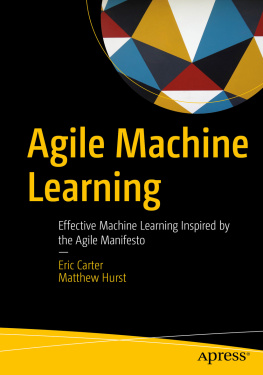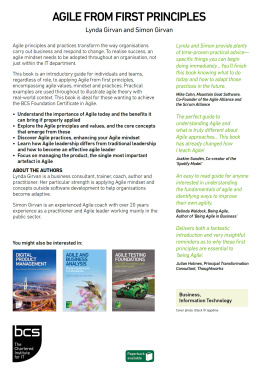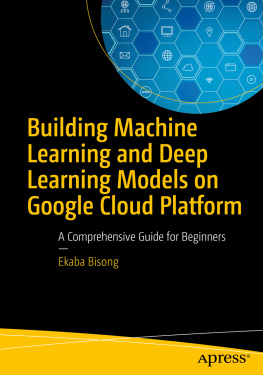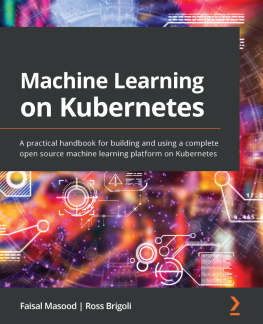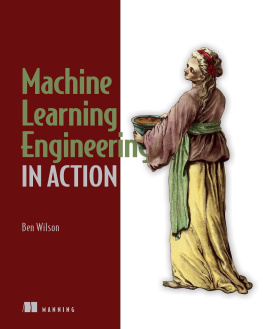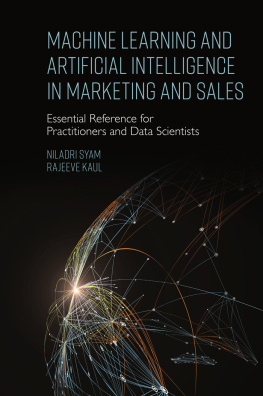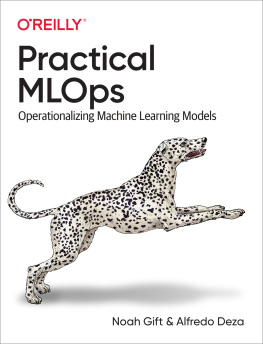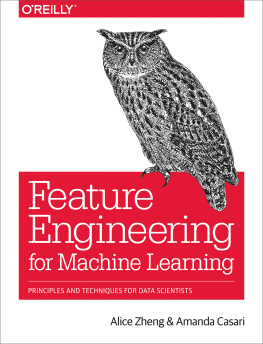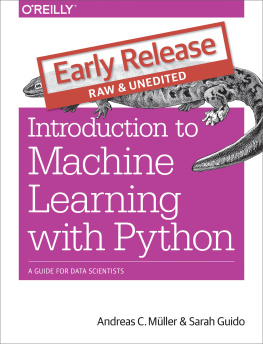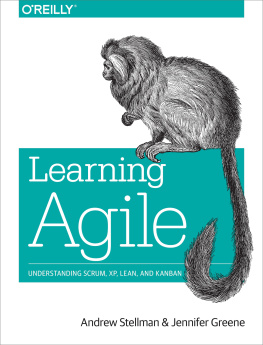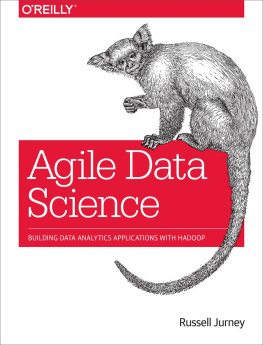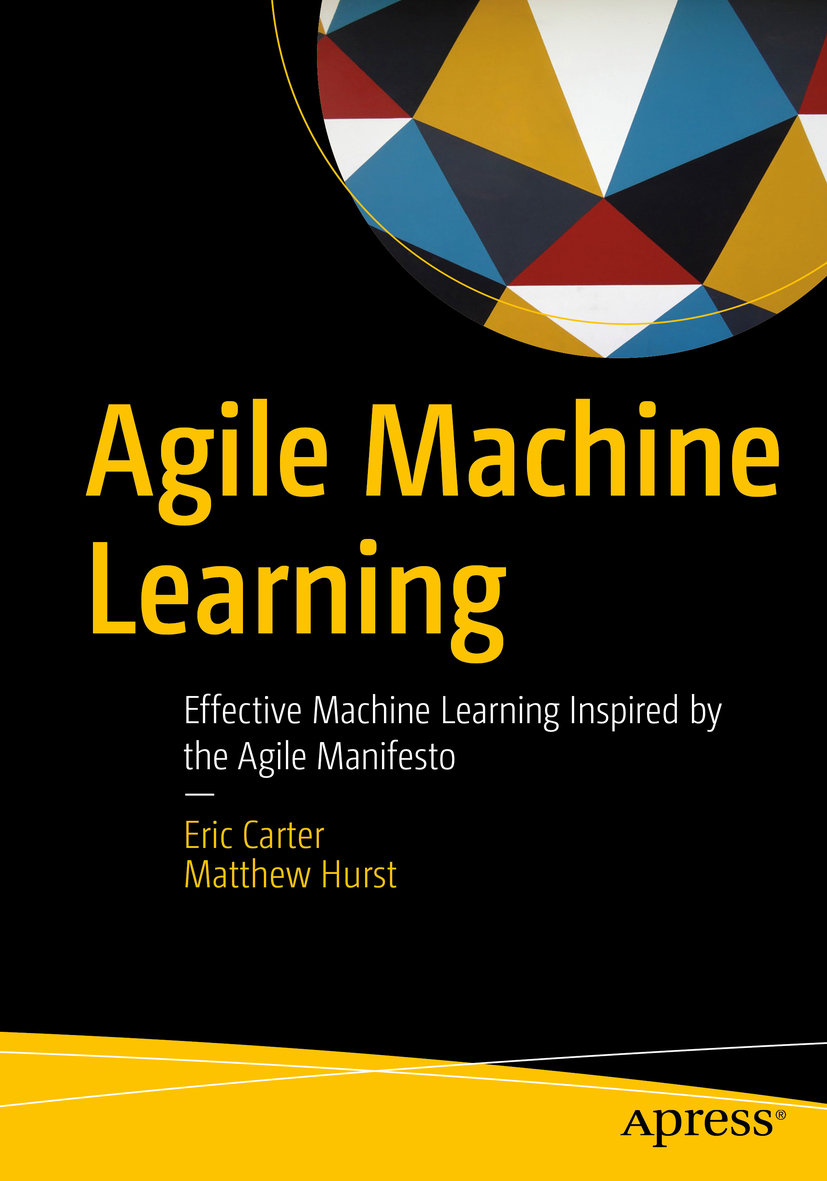Eric Carter
Kirkland, WA, USA
Matthew Hurst
Seattle, WA, USA
Any source code or other supplementary material referenced by the author in this book is available to readers on GitHub via the books product page, located at www.apress.com/9781484251065 . For more detailed information, please visit http://www.apress.com/source-code .
ISBN 978-1-4842-5106-5 e-ISBN 978-1-4842-5107-2
https://doi.org/10.1007/978-1-4842-5107-2
Eric Carter, Matthew Hurst 2019
This work is subject to copyright. All rights are reserved by the Publisher, whether the whole or part of the material is concerned, specifically the rights of translation, reprinting, reuse of illustrations, recitation, broadcasting, reproduction on microfilms or in any other physical way, and transmission or information storage and retrieval, electronic adaptation, computer software, or by similar or dissimilar methodology now known or hereafter developed.
Trademarked names, logos, and images may appear in this book. Rather than use a trademark symbol with every occurrence of a trademarked name, logo, or image we use the names, logos, and images only in an editorial fashion and to the benefit of the trademark owner, with no intention of infringement of the trademark. The use in this publication of trade names, trademarks, service marks, and similar terms, even if they are not identified as such, is not to be taken as an expression of opinion as to whether or not they are subject to proprietary rights.
While the advice and information in this book are believed to be true and accurate at the date of publication, neither the authors nor the editors nor the publisher can accept any legal responsibility for any errors or omissions that may be made. The publisher makes no warranty, express or implied, with respect to the material contained herein.
Distributed to the book trade worldwide by Springer Science+Business Media New York, 233 Spring Street, 6th Floor, New York, NY 10013. Phone 1-800-SPRINGER, fax (201) 348-4505, e-mail orders-ny@springer-sbm.com, or visit www.springeronline.com. Apress Media, LLC is a California LLC and the sole member (owner) is Springer Science + Business Media Finance Inc (SSBM Finance Inc). SSBM Finance Inc is a Delaware corporation.
Introduction
This book was born out of a fortuitous meeting. In July of 2012, Eric Carter had just returned to the U.S. following a three-year assignment in Germany launching a shopping search product for Microsoft to the European market. He was sorely disappointed because the effort he had led in Europe was shutting down and so began looking for a new gig. While exploring opportunities in Bing, Microsofts search engine, he met Matthew Hurst. Matthew had joined Microsoft as a member of Live Labs, an innovation group tasked with exploring novel solutions and applications around search, the cloud and connected technologies. From there hed worked on various incarnations of maps and local search, often on features connecting text with location. What followed was a complementary partnership that vastly improved the quality of Bings local search and ultimately led both on a learning journey of how data engineering projects benefit from the application of Agile principles .
The Agile Manifesto (or, The Manifesto for Agile Software Development , to give it its full title) came into being in 2001 as a collaboration of the seventeen signatories . It is summarized as four values ( individuals and interactions are valued over process and tools, working software over comprehensive documentation, customer collaboration over contract negotiations, and responding to change over following a plan) and twelve principles. In this book, we examine each of the principles in turn, and relate them to our experiences in working with data and inference methods in a number of projects and contexts.
When the authors met, Bings local search product was very much a work-in-progress. The quality of the catalog of local businesses was improving, but it was still far behind the Google, market leader at the time. Matthew was on the local search data team and he, along with other members of the team, had been exploring some innovative ideas to better leverage the web and integrate machine learning to dramatically improve the catalog. Eric saw a number of compelling challenges in the local search space as it existed in Bing, and decided to join as the engineering manager of Bings local data team.
At this point in his career, Eric was no stranger to managing teams at Microsoft, having been part of several Visual Studio related products and the now dismantled shopping search project. However, it was during his time working with Visual Studio that he discovered the intrinsic value of Agile, and how much more efficient and happy teams were when following Agile principles. Wanting to bring that to his new team, he found himself in a quandary how do you apply Agile to a team that is more about producing data than producing software? What would it take to bring Agile to a data engineering team?
It wasnt easy. At first, Agile seemed like an invading foreign agent. The team culture was about big ideas discovered through experimentation, long horizon research, and a lot of trial and error science projectsall seemingly contrarian to Agile principles like scrum, iterative development, predictability, simplicity, and delivering working software frequently. With a team focused on producing an exceedingly accurate database of all the businesses in the world, defining done was nothing short of impossible. After all, the singular constant in data is that it contains errorsthe work is literally never done. Faced with challenges such as communicating to stakeholders how and where the team was making progress, determining whether a particular development investment was worth making, and ensuring that improvements are delivered at a regular but sustainable pace, it became apparent that a modern Agile approach was critical. But how does one apply Agile in a team comprised of data scientists and traditional engineers all working on data-oriented deliverable?
Traditional Agile processes were intended to reduce unknowns and answer questions such as what does the customer want and how can software be delivered reliably and continuously. But in this new project, new world, we already knew what the customer wanted (a perfect catalog of local businesses ) but we needed to answer questions such as Whats in the data? and What are we capable of delivering based on that data? We needed Agile approaches, but revised for a modern, mixed talent, data engineering team.
As we navigated through next-generation machine learning challenges, we discovered that, without question, Agile principles can be applied to solve problems and reduce uncertainty about the data, making for a much happier and efficient team.
Our hope in bringing together this modernized version of Agile methodologies is that the proven guidance and hard earned insights found in this book will help individuals, technical leads and managers be more productive in the exciting work that is happening in machine learning and big data today.

